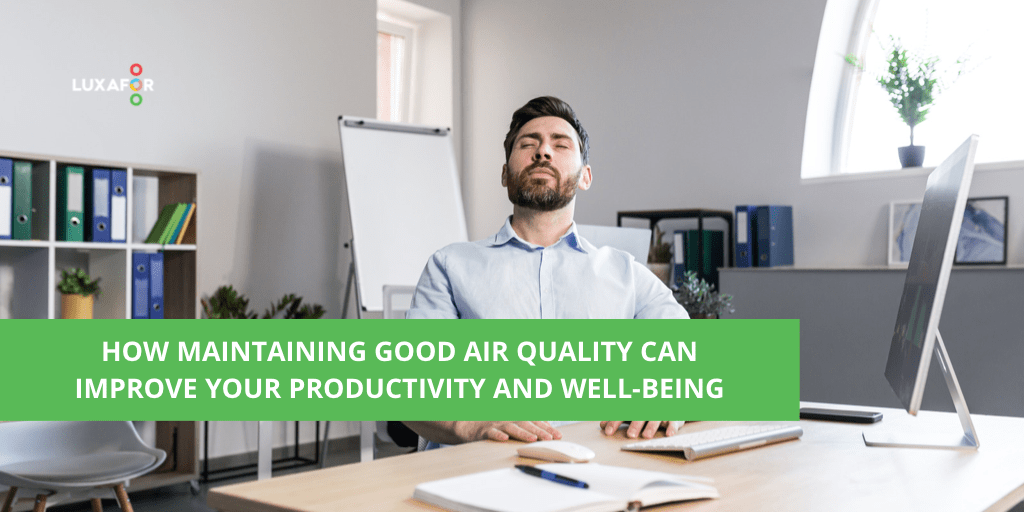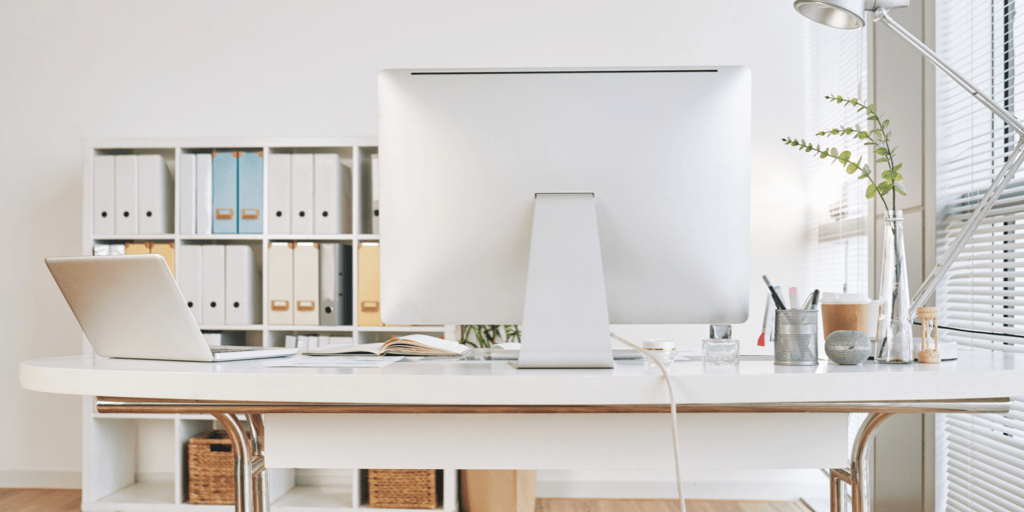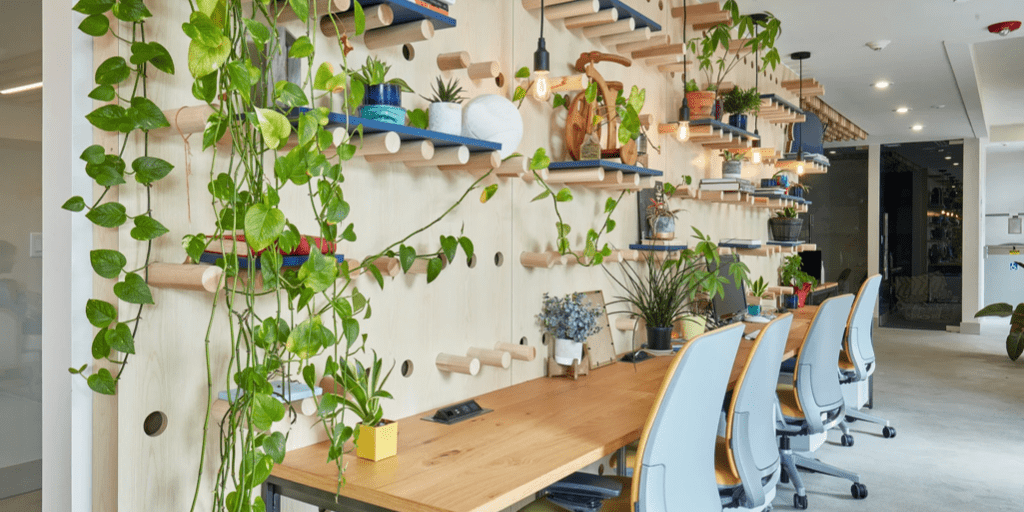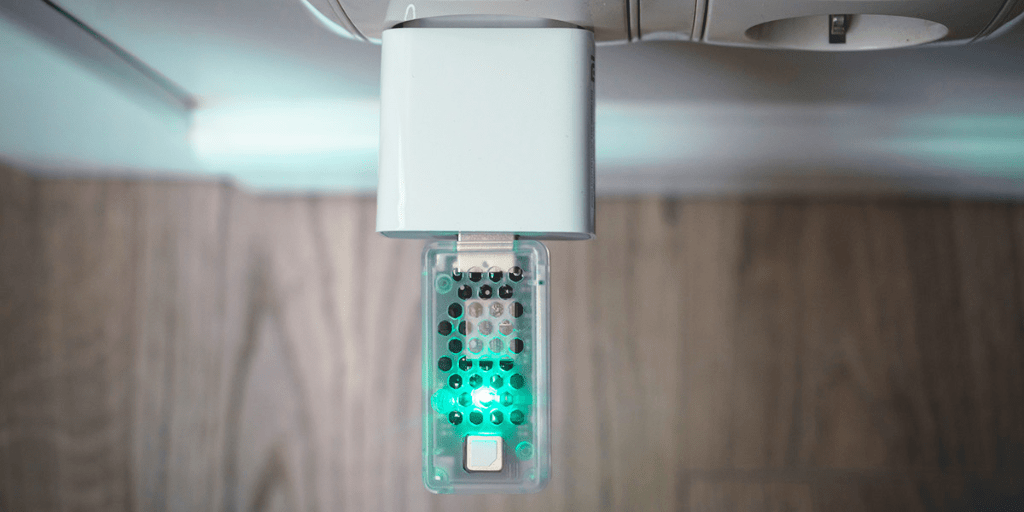How Maintaining Good Air Quality Can Improve Your Productivity and Well-being

The air that we breathe is essential not only for our survival but also for our overall health and that includes the cognitive functions, physical well-being, mental health, and productivity in our daily life. Have you ever noticed that without fresh air you sometimes lack focus, have a headache, feel tired? That will usually happen while staying in crowded office for too long. And when was the last time you thought about the quality of the air in your home, in the office, or other public spaces? Even after the global pandemic that put the world on hold and made us take serious precautions health-wise and socially, we tend to forget that monitoring the environment indoors is still important as it affects the way that our minds and bodies function.
According to the reports of the Environmental Protection Agency (EPA), the levels of air pollutants or toxins indoors may be up to 100 times higher than those that are more common outdoors as they could have a greater effect on your health. Mostly the CO2 level in the air, humidity level as well as indoor air toxins that have a potential to cause harm to your health can go undetected, but it is possible to avoid that. It is essential to be proactive and take action to improve indoor air quality which in turn will lower your risk of developing simply preventable health conditions and can greatly elevate the quality of life. We have prepared 7 tips to help you achieve this goal:
Do you want to keep a track of your productivity tips completion? And maintain new yourself improving habits? Get your free PDF version of the 100 Productivity Tips you need in your life in 2023 and start today!
1. Use natural materials in the interior
Organic and natural materials are materials that come from natural sources and are renewable. These types of materials offer an alternative to synthetic materials that are more commonly used. Organic materials are usually made from naturally produced and grown resources, they often require less energy and effort to manufacture. These materials include bamboo, wool, straw, cork and wood.
Using natural materials in your home and at work may seem like a good styling solution and a popular current interior trend. But remember that when you choose natural, unprocessed materials, you choose a sustainable and clean environment for your health, ecosystem and for overall well-being. Interiors that have natural materials and furnishing release a lot less toxic chemicals into the air that you breathe. These materials are more likely to be allergy free, have no chemical hazards and can be more fireproof. The most common natural interior materials are wood, bricks, wool, steel, cotton, bamboo, stone and leather, but there are many more to choose from. Natural materials are also good for your mental well-being as they bring us closer to the calmness of nature, which is an obvious motivation to add these types of indoor styling materials to your work space and home for more balanced and harmonious atmosphere.
2. Clean your living and working space

It is crucial to keep your living and working space dust, dirt, and clutter-free, as doing so will make you feel and function much better, because you can agree that dirty and cluttered places can have a negative effect on most people. Therefore you have to consider cleaning your house and office on a regular basis even if you sometimes lack the motivation to do so. Thankfully for you – here are some simple steps you can take to make sure your indoor space is clean and safe:
Step 1: Vacuum carpets and rugs as often as possible in your working and living premises.
Step 2: Clear surface clutter – declutter your space so that you can easily work and organize your day.
Step 3: Clean as you go – for example, make sure to clean your cutlery and kitchen items as soon as you have finished eating so that your dish washer or sink is clear before cooking, pick up and organize random items and move them out of your way while doing other tasks.
Step 4: Store cleaning supplies handy – keep designated storage space in the office or at home that is stocked with cleaning supplies that are most frequently used and are accessible for others too.
Step 5: Wipe all your home and office surfaces, so no dirt or dust can pile on them.
Step 6: Wipe the electrical surfaces, printers and monitors, including your PC, keyboard, phone screen, tablet, etc.
Step 7: Don`t forget to dust the more difficult to reach spots and light fixtures that can accumulate smut in the long term.
Step 8: Wipe the windows and mirrors to enhance the light and create a pleasant atmosphere in the premises.
Step 9: Take out the trash regularly, don`t let food, packaging or other waste accumulate in your office and home.
Step 10: Clean for 5 minutes every day – tidy up your table, shelves, and drawers, declutter your work space by organizing mail, documents and other stuff that has piled up during the day. These small steps will definitely contribute to cleaner home or office and will lead to clean and fresh air indoors ensuring that your productivity levels will grow without distractions, dust and clutter.
3. Monitor air quality including CO2, temperature and humidity levels
When thinking about a healthy working and living environment, the air quality should be the most important issue to focus on no matter the season – it is as important in summer as in winter. Although for many of us, oxygen levels and humidity levels at home or at work sometimes are not the top priority or cause for concern, but these factors are essential to our health, well-being, and productivity. High CO2 levels can cause dizziness, lack of focus, fatigue, headaches, increased blood pressure, shortness of breath and brain fog. The optimum CO2 levels indoors should be below 800 ppm, although CO2 levels below 1000 ppm are considered acceptable for most indoor environments.
Maintaining the optimal humidity level is important to ensure that you have a safe indoor environment that is free of mold. The ideal humidity range for health and comfort is found between 30-50% of humidity, according to the Environmental Protection Agency (EPA). When unbalanced – high moisture levels lead to the growth of fungus, mold and dust mites, later creating breathing difficulties for those who have asthma or allergies. However, low humidity levels and dry air can be hazardous causing respiratory discomfort, dry skin, dry eyes, and material damage.
Also suitable indoor temperature levels should be observed indoors depending on the season as this will help you work, rest and sleep much better. The World Health Organization has found that comfortable indoor temperatures between 18 and 24°C (64 and 75°F) are preferable and safe for general population.
The good news is that you can monitor all three of the above mentioned parameters with Luxafor CO2 Dongle. Preferably each home should have some type other air quality measuring device (or multiple) to monitor indoor humidity and CO2 levels as well as temperature in real-time. It is easy to monitor and oversee the quality of the air in the office or at home with tools that are specifically created for this purpose. For example, the Luxafor CO2 Dongle will allow you to precisely detect the level of humidity, CO2 levels, and temperature using a specially designed app on your device. This tool will serve you well, if you are concerned about the air quality in your home or at work, but are not sure what steps to take – it is a small investment that will let you test and make sure that your indoor oxygen, temperature and humidity levels are safe.
4. Choose houseplants for cleaner air

Another easy and accessible mean to create a healthy environment and promote clean air in your space is to bring nature indoors with some air purifying houseplants. Adding plants is an obvious way to add freshness within as well as add color to any room, office, or any other premise. It is important to realize that most green plants improve the air quality by helping to clean the air by absorbing and recycling carbon dioxide in the space they are located in. As accessible and trendy as plants are nowadays, you can pick and choose any style, size, or variety that will best suit your living and working space. There can be no excuse not to bring some beautiful plants, flowers, herbs, small decorative trees or any other types of greenery inside. You can also pick and choose from many cut flower suppliers to freshen up the interior with colourful and fragrant flower arrangements that will most definitely brighten your day.
While choosing a plant for your space, consider the type and the growing conditions of the plant. When it comes to keeping the air clean and removing pollutants, some plants perform better than others. Plants recognized as more effective at keeping indoor air clean are mentioned below:
Dracaena – a popular houseplant that often has sword-shaped leaves that come in many colors.
Spathiphyllum – also known as peace lily with its luscious green leaves and white flowers.
Hedera helix or common ivy – it will suit well in the office as low-maintenance plant;
Bird’s Nest Fern – these ferns are great air-cleaning indoor plants, purifying the air of formaldehyde, that can be found in new flooring and wall coverings;
Areca Palm or Butterfly Palm – is prominent in removing mold spores and ammonia (often found in household cleaning products) from the air, making it perfectly suitable for bath and shower rooms;
Spider Plant – these plants are known to eliminate formaldehyde, toluene and xylene – chemicals that are added in many synthetic fabrics, paints and glues; this plant is known to lower the levels of carbon monoxide.
Aloe Vera – absorbs carbon dioxide and produces oxygen during the night making it perfectly fitting for bedrooms. You can also have a read about best air-purifying plants for office for additional information about other beneficial plants for your space.
5. Organic furniture
When you think about a clean and healthy environment at home whether it be air quality, food, or your home equipment, there is a lot to consider. Even furniture can accumulate toxic chemicals and synthetics. As sustainability becomes more and more important, using renewable, natural materials for your home or office furnishings is not only a pleasant stylistic choice but also an environmentally friendly one. Inviting nature indoors is easy and it adds a sense of calm and comfort to your space. Make sure that you air out any new furniture as it can contain Volatile organic compounds (VOCs) – chemicals that can be emitted in the air such as toluene and benzene. These chemicals can be found in glues, paints, fabrics, and other materials. That is why it`s important to buy products that are made out of sustainable and renewable materials. Do look for manufacturers that are eco-friendly and are consciously making an effort to help the planet. You can also look for used furniture and textiles for your space as they are far more likely to have fewer chemicals and toxins, it is also a clever way to save money and add a vintage feel to your office and home.
Using the air conditioner not only keeps your home well ventilated and helps to reduce humidity, but it also helps to remove moisture from the air. The filtration system of air conditioner works to remove pollutants from the air, greatly improving its quality and limiting the harmful effects of particles floating in the air. For many people suffering from allergies the summer months are difficult when the pollen level is high. In such cases it is not practical to have windows open frequently, therefore air conditioning system can provide relief from health triggers as well as protect from the heat. Air conditioning will also help to boost productivity as a hot and stale environment with no proper ventilation will not encourage productive work. Such conditions make it difficult to focus and will deplete energy levels. That is why a constant supply of fresh air can provide the oxygen needed to stay alert, that is why air conditioning is an invaluable asset for any home or office space. You can also ventilate, promote air circulation- opening doors, windows at home or at work and turning on a fan can help prevent humidity from compounding in your living area. It is important to ventilate your home or workspace regularly to prevent stuffed air that can cause headaches and fatigue. Aeration will also lessen the spread of microbes and viruses. Just open the windows as many times as possible during the day and let the fresh air inside. Your colleagues will appreciate the oxygen that will help boost their brain functioning and promote more energy and productivity for those who might feel tired or sleepy. Air circulation also helps to dry out any moisture-rich premises, but at the same time will help to give moisture to spaces that are dry due to central heating in winter months – it`s a win-win situation!
7. Don`t use scented candles and artificial air fresheners
Stop using scented candles and chemical air fresheners they may contain harmful chemicals that are unsafe to inhale. Despite the colorful marketing approach that tries to sell their products with exotic scents for your home – most air fresheners and scented candles emit chemicals into the air.
Many people often turn to air fresheners (such as sprays, candles, incense, scent diffusers, etc.) to mask or remove unpleasant odors. However, air fresheners contain a variety of chemical components that can be problematic for some individuals and can contribute to poor indoor air quality. The overuse of artificial air fresheners can raise health and safety concerns so it is recommended to monitor and control indoor air pollution as air fresheners can affect indoor air quality by adding potentially hazardous pollutants to the air. The use of these products is associated with elevated levels of volatile organic compounds (VOCs), such as formaldehyde, acetaldehyde, benzene, toluene, ethyl benzene, and xylenes in indoor air. These VOCs are difficult to detect in the air, but they can irritate the eyes, nose, and throat, as well as cause headaches and nausea.
You can instead flex your creative muscle for a good cause and make your own air freshener. To do that you can simply combine water, lemon or orange slices, and rosemary, adding lavender or any other essential oil you would like to use in a small pot and let simmer for a while.
Summary

Indoor air quality should be one of the most important concerns in your home and workplace as it directly affects the overall health and well-being of your family, staff, and employees. Poor air quality can increase the risk of many health problems, from respiratory illnesses to infections. It can even compromise your mental health and cognitive functioning. A variety of factors can impact the air quality in your living space, and they can contribute to a range of adverse health effects as mentioned previously. It only takes some conscious changes – just starting small and taking it step by step. You can use natural materials as well as organic furniture, make sure to clean and organize your living and working space. There are many other ways how you can upgrade your air quality indoors such as adding houseplants, monitoring indoor air quality, increasing air circulation, and avoiding artificial air fresheners. We have provided you with sustainable alternatives and 7 easy tips to create a healthy air and environment for you, your family, and your workmates, as it is our duty to take charge of our indoor and outdoor environment. By making these changes you will eventually feel the benefits in your productivity, welfare, and overall physical and mental well-being.
LUXAFOR HELPS PEOPLE TO ACHIEVE THEIR GREATEST PRODUCTIVITY LEVELS WITH A WIDE VARIETY OF OFFICE PRODUCTS. LET’S BE PRODUCTIVE TOGETHER!



